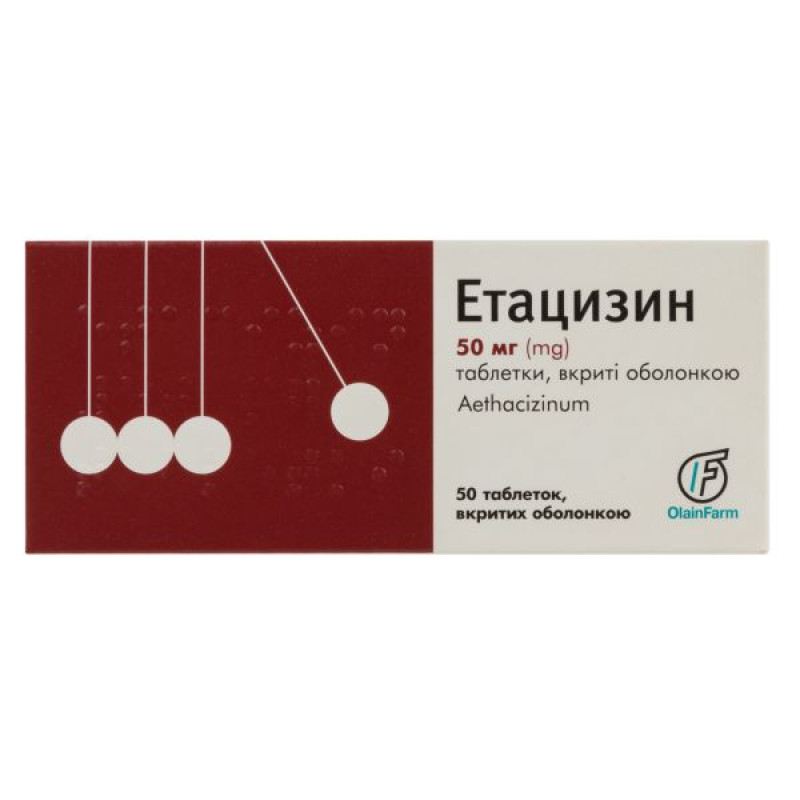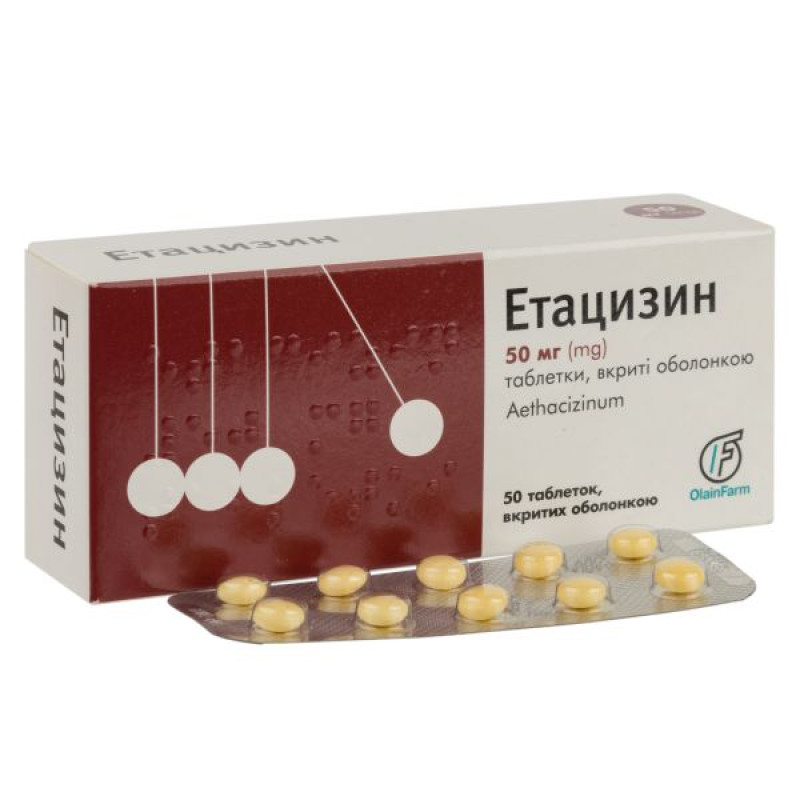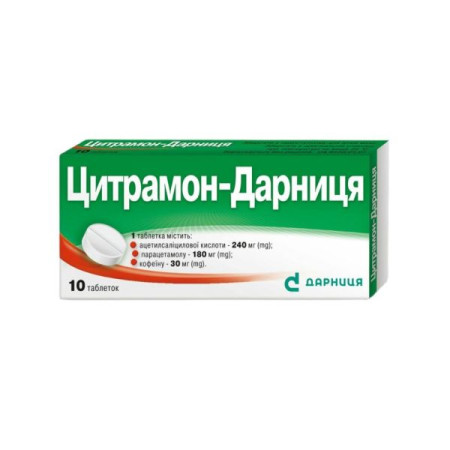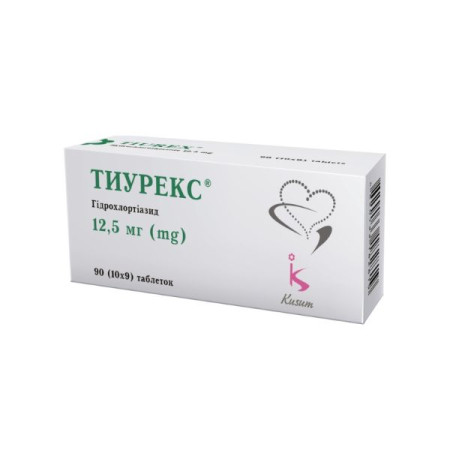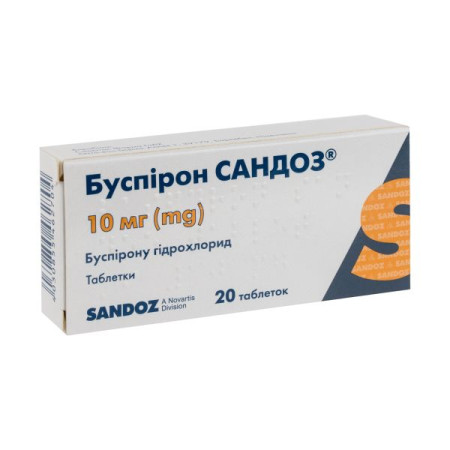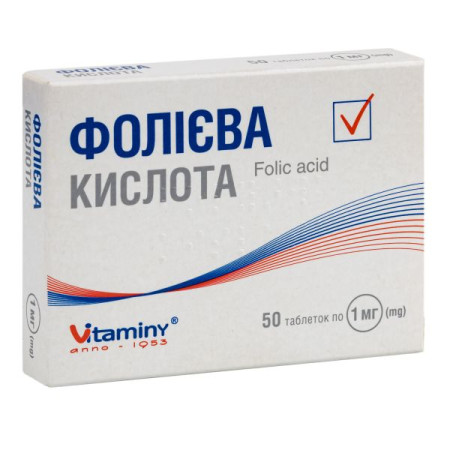Etacizin film-coated tablets 50 mg blister No. 50
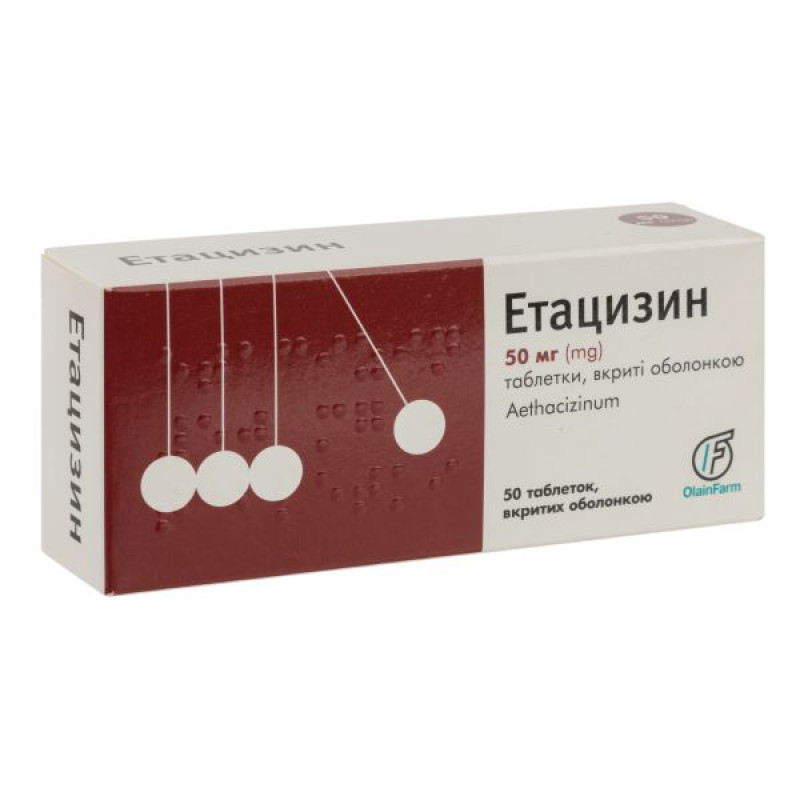
Instructions for use Etacizin film-coated tablets 50 mg blister No. 50
Composition
active ingredient: etacisin;
1 film-coated tablet contains 50 mg of ethacysin;
excipients: potato starch, methylcellulose, sucrose, calcium stearate; shell: sucrose, povidone, calcium carbonate, light magnesium carbonate, colloidal anhydrous silicon dioxide, carnauba wax, dyes: quinoline yellow (E 104), sunset yellow FCF (E 110), titanium dioxide (E 171).
Dosage form
Film-coated tablets.
Main physicochemical properties: round biconvex tablets, coated with a yellow shell. On cross-section, the shell and core are almost white.
Pharmacotherapeutic group
Antiarrhythmic drugs, class IS. ATC code C01BC09.
Pharmacological properties
Pharmacodynamics
Etacisin is a class IC antiarrhythmic drug. It has a pronounced and long-lasting antiarrhythmic effect. It inhibits the rate of rise of the action potential front, does not change the resting potential. It mainly affects sodium channels (both on the outer and inner surfaces of the cell membrane), reduces the amplitude and slows down the processes of inactivation and reactivation of the fast sodium current. It blocks the entry of calcium ions through slow membrane channels. It prolongs the duration of refractory periods of the atria and the atrioventricular node. It slows down the rate of rise of the action potential in the atrial and ventricular Purkinje fibers and additional pathways of excitation through the atrioventricular (AV) node and the bundle of Kent. It inhibits sinoatrial conduction, especially in sick sinus syndrome, widens the QRS complex on the electrocardiogram (by approximately 25%), as it slows down ventricular conduction (in the His-Purkinje system). It has a negative isotropic effect, exhibits local anesthetic and antispasmodic activity.
Etacitazine does not change heart rate with short-term use and reduces it with long-term use.
Pharmacokinetics
When taken orally, Etacisin is rapidly absorbed from the gastrointestinal tract and is detected in the blood within 30–60 minutes. The maximum concentration of Etacisin in blood plasma is recorded after 2.5–3 hours. Bioavailability is 40%. 90% binds to blood proteins. The half-life is on average 2.5 hours. All of the above pharmacokinetic parameters are subject to significant individual fluctuations. Etacisin is intensively metabolized during the first pass through the liver. Some of the metabolites formed have antiarrhythmic activity.
It is excreted from the body in the urine in the form of metabolites.
Indication
Ventricular and supraventricular extrasystole; paroxysms of atrial fibrillation and flutter; ventricular and supraventricular tachycardia, including in the syndrome of premature ventricular excitation.
Contraindication
Hypersensitivity to etacisin or to the excipients of the drug; severe conduction disorders (including sinoatrial block, atrioventricular block II-III degree in the absence of an artificial pacemaker), intraventricular conduction disorders; severe hypertrophy of the left ventricular myocardium; the presence of post-infarction cardiosclerosis; cardiogenic shock; acute coronary syndrome; acute myocardial infarction and the period three months after acute myocardial infarction; severe dilatation of the heart cavity; decreased left ventricular ejection fraction (echocardiography data), sinus node arrest; severe arterial hypotension; chronic heart failure III and IV class; severe liver and/or kidney function disorders; electrolyte balance disorders (hypokalemia, hyperkalemia, hypomagnesemia); simultaneous administration of monoamine oxidase inhibitors (MAO); simultaneous use of class IA antiarrhythmics (moracizin (ethmosin), propafenone, alapinin) and class IA (quinidine, procainamide, disopyramide, ajmalin); heart rhythm disturbances in combination with blockades of the His-Purkinje fiber conduction system; pregnancy and breastfeeding; patient's age up to 18 years.
Interaction with other medicinal products and other types of interactions
The simultaneous use of antiarrhythmic drugs of class 1C - moracizin, encainide, flecainide, propafenone - is contraindicated. The combination of b-adrenergic blockers with antiarrhythmic drugs of class 1C (Etacizin) enhances the antiarrhythmic effect, especially in relation to arrhythmias provoked by physical exertion or stress. Such a combination allows the use of antiarrhythmic drugs in small doses, which reduces the frequency of their side effects. This combination is indicated for the treatment and prevention of paroxysmal tachycardias, including ventricular.
Etacisin can be taken together with amiodarone (class III). In such cases, the doses of both drugs should be reduced. For the prevention of ventricular fibrillation or ventricular paroxysmal tachycardia, the combination of mexiletine + etacisin + anaprilin can be used.
The use of glutamic acid together with Etacizin eliminates the cardiodepressive effect of the latter in patients with initial signs of circulatory disorders.
Etacizin should not be administered together with MAO inhibitors.
When treating with Etacizin, its interaction with ethanol-containing drugs should be taken into account.
You should not drink alcohol during treatment with Etacizin.
Application features
Treatment of arrhythmias caused by myocardial infarction requires see section "Contraindications"
should be started no earlier than 3 months after the development of myocardial infarction.
With special caution, Etacizin should be prescribed for:
sick sinus syndrome, bradycardia, first-degree AV block, incomplete bundle branch block, severe circulatory disorders (ischemic disease, chronic heart failure), cardiomegaly (increased risk of arrhythmogenic effects), presence of a pacemaker (increased risk of arrhythmia), angle-closure glaucoma, benign prostatic hypertrophy, hepatic/renal failure.
Like other antiarrhythmic drugs, Etacizin can have an arrhythmogenic effect, therefore, when prescribing it, the following rules should be observed:
- Carefully study the contraindications to the use of the drug.
- Before starting treatment, correct hypokalemia, if detected.
- Do not use simultaneously with class 1A and IC antiarrhythmic drugs.
- It is advisable to start the course of treatment in a hospital (especially during the first 3–5 days of use and taking into account the ECG dynamics after trial and repeated doses of Etacizin or ECG monitoring data).
- Immediately discontinue course treatment in case of an increase in the number of ectopic ventricular complexes, manifestations of blockade or bradycardia, with expansion of ventricular complexes by more than 25%, with a decrease in their amplitude, with expansion of the P wave on the ECG by more than 0.12 seconds or QT intervals of more than 500 ms. The drug should be used with caution if the QT interval is more than 400 ms.
Risk factors for the arrhythmogenic effect of Etacisin are considered to be: organic heart damage (especially previous myocardial infarction), decreased left ventricular ejection fraction.
The arrhythmogenic effect does not directly depend on the dose of the drug. To reduce the likelihood of arrhythmogenic effects, it is recommended to use Etacizin simultaneously with small doses of β-blockers.
During treatment, it is necessary to regularly monitor the patient's condition and cardiovascular system functions (ECG, blood pressure, echocardiography).
Etacisin contains sucrose, so the drug should not be used in patients with rare hereditary problems of fructose intolerance, glucose-galactose malabsorption or sucrase-isomaltase insufficiency.
The tablet coating contains the dye "Sunset Yellow" (E 110), which may cause allergic reactions.
Patients with sick sinus syndrome, especially when first using the drug, require ECG monitoring 2–3 days after starting the drug.
Patients with impaired liver function should be cautious during long-term treatment, as hepatotoxic effects are possible (use is contraindicated in severe liver function impairment).
Ability to influence reaction speed when driving vehicles or other mechanisms
The use of etacizin may cause dizziness and visual disturbances, so in these cases you should refrain from driving vehicles and working with potentially dangerous mechanisms.
Use during pregnancy or breastfeeding
Pregnancy
There are no clinical data on the use of ethacysin during pregnancy. Animal studies do not indicate direct or indirect harmful effects on pregnancy, embryonal/fetal development. Use during pregnancy is contraindicated.
Breast-feeding
Etacisin is excreted in breast milk, so the use of the drug during breastfeeding is contraindicated.
Method of administration and doses
Etacizin should be taken orally, regardless of meals, starting with 50 mg 2–3 times a day. If the clinical effect is insufficient, the dose should be increased (with mandatory ECG monitoring) to 50 mg 4 times a day (200 mg).
When a stable antiarrhythmic effect is achieved, maintenance therapy should be carried out in individually selected minimum effective doses.
Some patients require combined treatment with Etacizin and β-blockers to achieve stable antiarrhythmic action.
Elderly patients
Elderly patients should be treated with caution when using ethacysin. The initial dose should be reduced and the dose should be increased cautiously.
Liver dysfunction
Patients with impaired liver function should be treated with caution during long-term treatment, as hepatotoxic effects are possible. Use is contraindicated in severe liver dysfunction.
Children
The use of the drug in children is contraindicated.
Overdose
Symptoms: prolongation of PR intervals and widening of the QRS complex, increased amplitude of T waves, bradycardia, sinoatrial and AV block, asystole, paroxysms of polymorphic and monomorphic ventricular tachycardia, decreased myocardial contractility, persistent decrease in blood pressure, dizziness, blurred or impaired vision, headache, gastrointestinal disorders.
Treatment: gastric lavage. Symptomatic therapy: sodium bicarbonate, which can eliminate the expansion of the QRS complex, bradycardia and arterial hypotension. Do not use antiarrhythmic drugs of classes IA and IS for the treatment of ventricular tachycardia.
Close observation of the patient with blood pressure and ECG monitoring (monitoring for at least 6 hours until undesirable ECG changes disappear).
Adverse reactions
Classification of adverse reactions by frequency of development: very common (≥ 1/10); common (≥ 1/100 to < 1/10); uncommon (≥ 1/1000 to < 1/100); rare (≥ 1/10,000 to < 1/1000); very rare (< 1/10,000); unknown (cannot be determined from the available data).
Side effects do not occur in all patients and are often dose-dependent. To avoid them, maximum doses of the drug should not be administered immediately.
Allergic reactions are possible in people with individual intolerance.
From the cardiovascular system: rarely - sinus node arrest, AV block, intraventricular conduction disorders, decreased myocardial contractility, decreased coronary blood flow; very rarely - arrhythmogenic effect, especially after myocardial infarction and other cardiac pathology, leading to decreased myocardial contractility and the development of heart failure; very rarely - proarrhythmogenic effect with the risk of sudden death.
ECG changes: very rarely - prolongation of the PQ interval, broadening of the P wave and QRS complex.
From the side of the central nervous system: often - dizziness, accommodation disorders (at the beginning of treatment); rarely - headache, slight drowsiness; very rarely - balance disorders when walking or turning the head sharply; very rarely - diplopia.
Gastrointestinal: rarely - nausea, epigastric pain.
Expiration date
3 years.
Storage conditions
Store in the original packaging at a temperature not exceeding 25 °C.
Keep out of reach of children.
Packaging
10 tablets in a blister. 5 blisters in a cardboard pack.
Vacation category
According to the recipe.
Producer
JSC "Olainfarm" / JSC "Olainfarm".
Location of the manufacturer and its business address
5 Rupnicu street, Olaine, LV-2114, Latvia.
There are no reviews for this product.
There are no reviews for this product, be the first to leave your review.
No questions about this product, be the first and ask your question.







